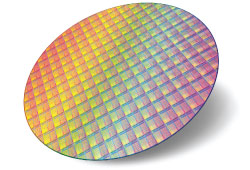Secrets of Saliva
Exciting New Technology Can Detect Cancer And Other Serious Diseases
(Continued)
How Tiny Molecules Are Measured
 |
| A technique called mass spectrometry is the primary means of analyzing the types and amounts of different proteins in saliva. |
A technique called mass spectrometry (“spectrum” – colored light; “metry” – measurement) is the primary means of analyzing the types and amounts of different proteins in saliva. Essentially, different molecules emit different, yet specific types of light, and just like fingerprints, they are unique. For example, this has enabled scientists to compare the proteins in saliva from healthy people to those with early-stage oral cancer.
Because diseases are not marked by just one protein or RNA molecule, but perhaps by more than 100, identifying them is a very complicated task. Laser technology has allowed the identification of thousands of salivary molecules from many individuals with speed and accuracy. Salivary samples are laid out in a grid, or array, on a palm-sized wafer made of quartz. A laser “reads” each position on the array and indicates what type of RNA is present in the sample and in what quantities.
 |
| Salivary samples are laid out in a grid on a palm-sized wafer made of quartz. A laser “reads” each position on the array and indicates what type of RNA is present in the sample and in what quantities. |
Pushing The Frontiers Of Science
Importantly, we have now unraveled the mechanisms responsible for the development of biomarkers for systemic diseases in saliva and provided the scientific rationale for using saliva to detect these life-threatening conditions. As the field of salivary biomarker diagnosis grows, the biomarkers we are studying may prove to be just the tip of the iceberg — especially if one considers what can also be gleaned from other materials, such as blood, urine, spinal fluid, tears and more. It seems likely that biomarkers for certain diseases will prove to be more abundant in some types of samples than in others. Which works best for what? That question will undoubtedly remain under investigation in coming years. However, we are optimistic that saliva will continue to reveal secrets about the state of disease or health in both the mouth and the rest of the body. It's exciting to have such life-saving technology within — spitting distance!

